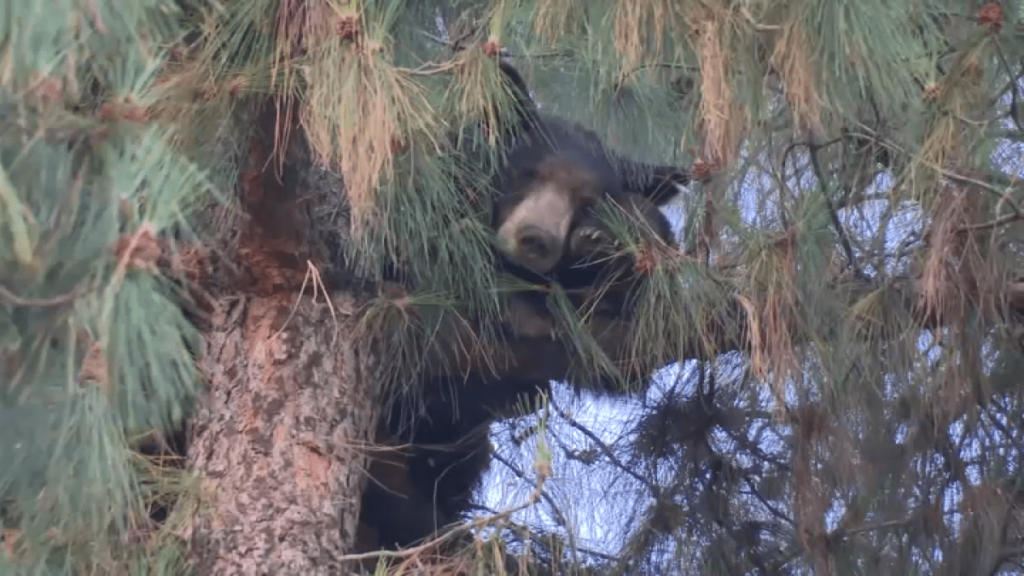In many ways, it was a classic Southern California scene this week when another black bear wandered into a spot too close for comfort.
But what’s unusual about the Chatsworth sighting is that the location itself was far from the foothills of the San Gabriel Valley, where bear sightings most frequently occur.
“With her specifically, we were able to confirm, ‘Yes, this is the bear that was spotted in Chatsworth,'” said Jessica West, an environmental scientist with the California Department of Fish and Wildlife, “and indeed she is in a location that is unable to quickly return to suitable habitat.”
West spoke with NBC4 and detailed authorities’ efforts to track the bear across the state, starting with that initial encounter.
In the case of the female bear, whom authorities are calling Yellow 2291, the initial contact happened in late May when she wandered into a wildlife trap in Claremont, about 60 miles away.
Yellow 2291 was tagged, screened for health issues and eventually fitted with a GPS collar, West said.
“Her collar data was the most interesting we’ve ever seen,” West said. “She’s just wandering around. This behavior may be more common in male bears, because they tend to have larger ranges.”
Just over a month after being released, Yellow 2291 has proven its swiftness and fur, traveling west from Claremont across the 210 Corridor, over Routes 5 and 14, and down the 118 Corridor to Simi Hills.
West said the bear made it to Malibu before traveling north to the San Fernando Valley, where it was recaptured this week and released back into the wild.
“This bear was also acting pretty crazy,” West explained, adding that bears have incredible homing abilities and were probably trying to get back to a more familiar area. “We were just watching her and we were like, it looks like she’s already on her way to Angeles National Forest, let’s just help her out and get her there a little bit quicker.”
She was released there this week and will continue to be followed up.
GPS collars for adult bears have a battery life of one to two years, and the collar weighs no more than three to five percent of the animal’s body weight.
“When we put on a collar, we always make sure it’s not too tight or too heavy,” West said.
Experts say it’s unclear why Yellow 2291 decided to cross such a large area of Los Angeles County, but they hope research will one day provide a clearer answer.
“They’re still a mystery to us in a lot of ways,” West said. “Yeah, she’s a really cool bear.”

